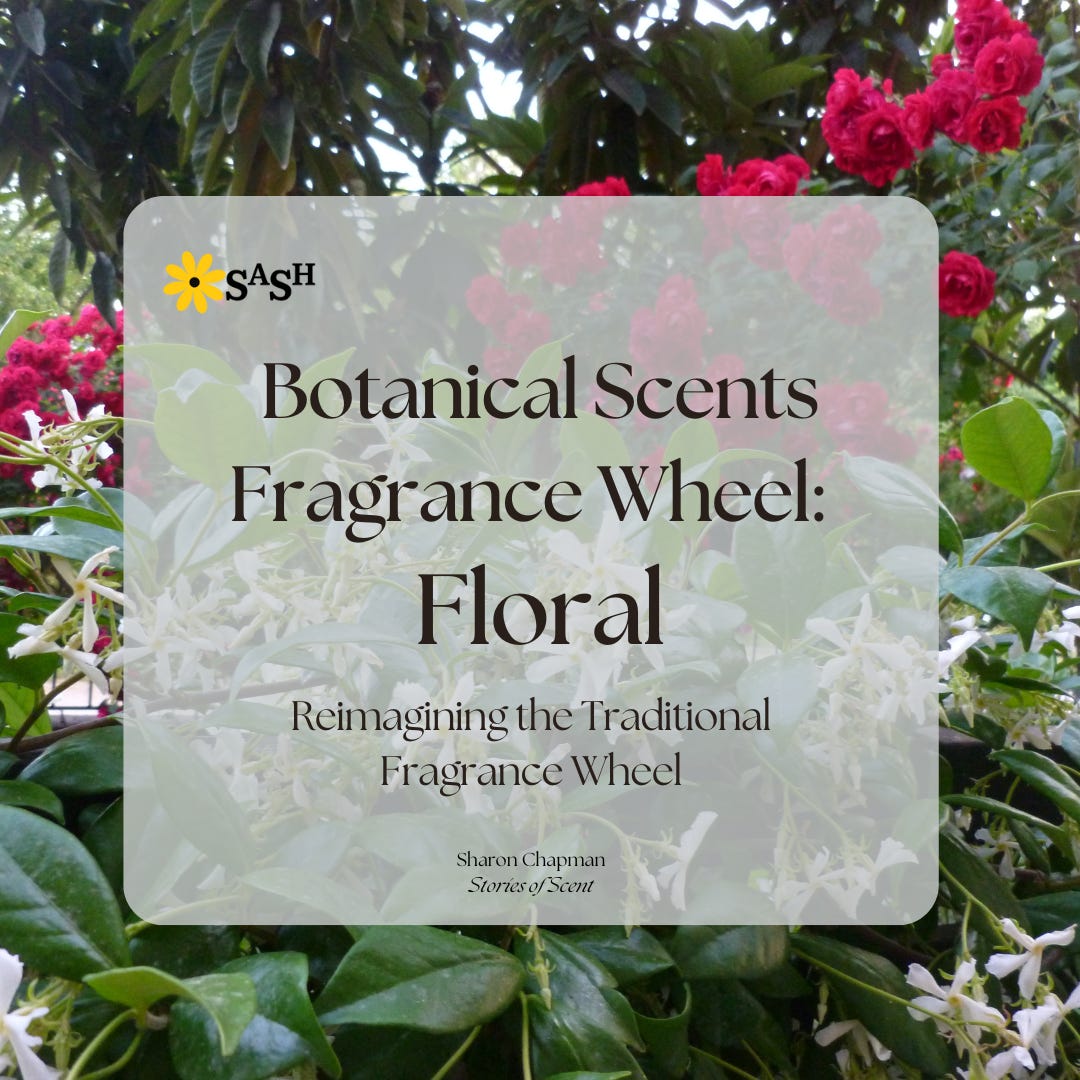Last week, I introduced you to my new scent project:
Making a Botanical Scents Fragrance Wheel
This week, we are starting a new journey - and a new project - after over a year of getting to know Scent Word Families(TM). If you are familiar with the world of perfumery, you have no doubt heard of fragrance families (not to be confused with my own Scent Word Families(TM)) and/or the fragrance wheel. Both are tools to understanding how scents are cla…
The aim of this project is to reimagine the traditional fragrance wheel used by perfumers and make one that is suited specifically to botanical scents - used by botanical perfumers and aromatherapists.
Over the years that I have been studying botanical perfumery, I have come up with some of my own interpretations/understandings based on the traditional fragrance families/wheel, which - to me - fit more easily with botanical perfumery.
As I started to think about this project, I realized that my Botanical Scents Fragrance Wheel was going to divert from the traditional fragrance wheel by one major component. It would have a “central” wheel.
For those of you who follow my work - and in particular have tried some of my botanical fragrances - you will know that there is a central theme to all of my fragrance creations, whether it is apparent or not in the final scent. Each fragrance is built around a floral component. Not necessarily an accord, but one or two principal florals. I guess you could describe it as a type of “soliflore within the overall fragrance.”
So, it made sense to me to have one full central “wheel” which was floral - and from which all other groups diverged. Usually the first part of a traditional fragrance wheel is the branching of the first group of “spokes;” for example, citrus, green, floral etc.
And there’s more. But we won’t talk about that until we’ve put together the actual fragrance wheel. You’ll want to stay subscribed in order not to miss anything. But first…
What is Floral in Perfumery?
My interpretation of floral in perfumery is, as you may have guessed by now, a botanical extract (essential oil, absolute, or CO2) that is a rich, deep flower aroma, reminiscent of some of your favorite romantic flowers in the garden, many of which were present in traditional cottage gardens. These include:
rose (Rosa spp.)
jasmine (Jasminum spp.)
gardenia (Gardenia spp.)
sweet pea (Lathyrus odoratus)
Lily of the valley (Convallaria majalis)
Hyacinth (Hyacinthus orientalis)
Lilac (Syringa spp.)
Magnolia (Magnolia grandiflora)
Narcissus (Narcissus spp.)
Mock orange ((Philadelphus spp.)
Not all of the above mentioned flowers produce an extract for botanical fragrance use - but some can be replicated through the creative combination of other extracts. They can also be tinctured.
So, we now have the central “wheel” which looks something like this:
By the end of the journey, we will have put together a botanical scents fragrance wheel that you can exclusively use with botanical perfumery. However, remember that this is simply my own interpretation and there is no one size fits all.
Learning botanical scents and organizing them into some sort of reference tool is extremely useful as a perfumer.
Perfume formulation can be a puzzle - but it doesn’t have to be! By subscribing to and reading my short FREE articles each week, you’ll get nugget-sized pieces of information to build your scent tools. Upgrade to paid to take that learning deeper, and get examples of actual oils, absolutes, and extracts to build into your botanical scents fragrance wheel (in the coming months).
Please drop a heart below if you like this article, forward it to a friend, or invite someone to subscribe (and perhaps get a free month’s paid subscription for doing so!).
What did you learn from this article? Drop me your thoughts in the comments below.
““The earth laughs in flowers.”
Ralph waldo Emerson (1803-1882), American Essayist







